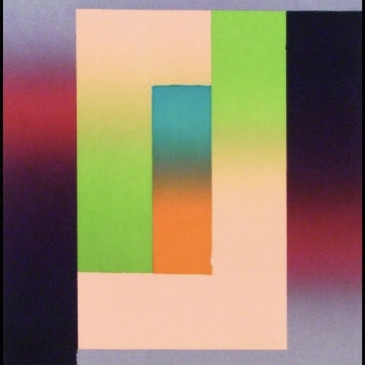
Details
Artist
Styles
BARCELONA #5, 1988, color lithograph, signed in pencil, from the numbered editions 75, sheet 30 x 22 // Barcelona #5 by Larry Bell, a color lithograph from 1988, captures the artist's exploration of light, color, and spatial perception. In this composition, overlapping rectangular shapes in vibrant shades of green, orange, pink, and teal contrast against a softly gradated background that shifts from deep purple to red and gray. The interplay of colors and geometric forms creates a sense of depth and illusion, making the flat surface appear multidimensional. Bell, known for his innovative work with light and shadow, invites viewers to experience a shifting visual perception as they take in the layered hues and forms. Limited to an edition of 75, this lithograph exemplifies Bell's refined approach to minimalist abstraction and his fascination with the boundaries of two-dimensional space.
Barcelona #5, 1988
form
Medium
Size
76.2 x 55.88 cm
- Inches
- Centimeters
Edition
Price
Details
Artist
Styles
BARCELONA #5, 1988, color lithograph, signed in pencil, from the numbered editions 75, sheet 30 x 22 // Barcelona #5 by Larry Bell, a color lithograph from 1988, captures the artist's exploration of light, color, and spatial perception. In this composition, overlapping rectangular shapes in vibrant shades of green, orange, pink, and teal contrast against a softly gradated background that shifts from deep purple to red and gray. The interplay of colors and geometric forms creates a sense of depth and illusion, making the flat surface appear multidimensional. Bell, known for his innovative work with light and shadow, invites viewers to experience a shifting visual perception as they take in the layered hues and forms. Limited to an edition of 75, this lithograph exemplifies Bell's refined approach to minimalist abstraction and his fascination with the boundaries of two-dimensional space.
What is Entropy?
Entropy, in a broader sense, refers to the inevitable deterioration or decline of a society or system. In art, the concept was popularized by artist Robert Smithson in the 1960s. He used the term to critique what he saw as the static and overly simplified nature of contemporary minimalist art. Smithson's work often explored the idea of entropy as a force of chaos and decay, contrasting with the perceived order and purity of minimalist works.











